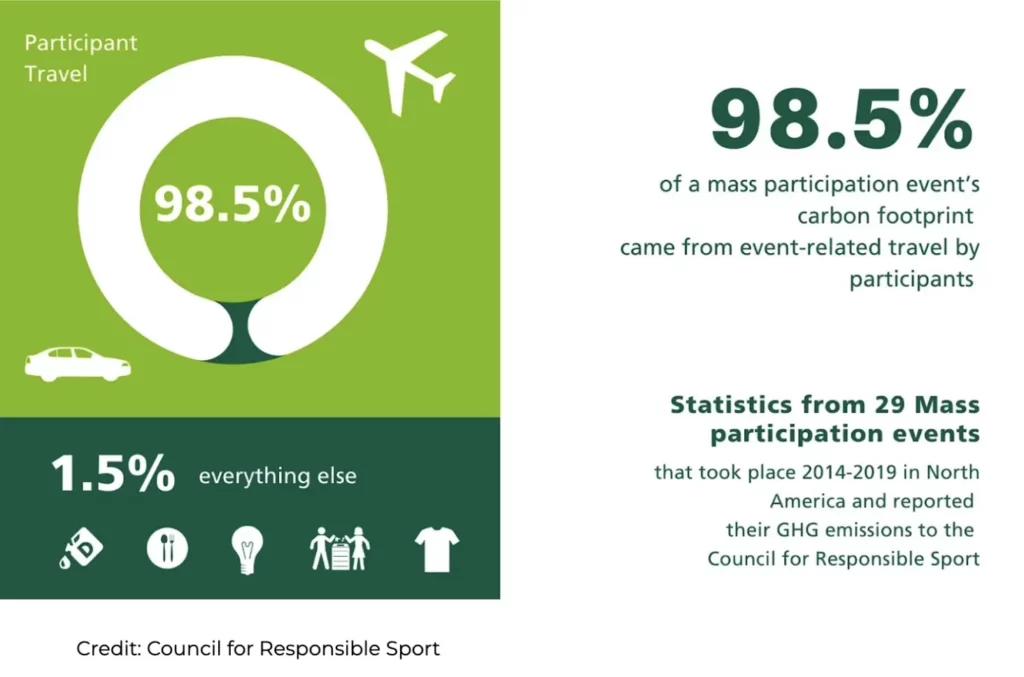Terry Chiplin is a longtime endurance runner and trail running coach who is passionate about taking climate action. As the Director of the US Trail Running Conference, Terry has cast the burgeoning trail running industry’s eye towards its climate and environmental impacts and opportunities for change. I met Terry at the 2021 US Trail Running Conference, and I was so inspired by his authentic enthusiasm that I knew I had to share this ray of light with our community. Below you’ll find a transcript (edited for brevity) of my conversation with him earlier this year.
Can you share a little bit about your background? What got you into the business of trail running?
Oh wow. It’s been 67 years, Claire! I’ve always been a runner. The best memories I have in terms of running in my youth were times when I was in a forest, parkland, or grass, running in nature. Then I started running roads, and lost that connection with nature. Coming out to Colorado in 2006, we started running trails again, and it was like “oh my god, why wasn’t I doing this before?” Then we started doing trail running camps here in Colorado, and I got connected with the American Trail Running Association (ATRA), and things have just grown from there organically, driven by my passion for running in nature. Through my partnership with ATRA, we came up with the idea for putting together a trail running conference. In 2013, we hosted the first Trail Running Conference under a different name. It became the US Trail Running Conference in 2016, and we’ve been growing and developing the event ever since.
Tell me why you want to focus on sustainability and the environment at the 2022 US Trail Running Conference:
For 2022, the theme will be “The Trail Towards Carbon Neutral Racing.” Because of its inherent connection with nature, trail running has a key responsibility as a sport not only to produce sustainable races, apparel, shoes, and technology, but also to address the unseen damage that our sport is creating in terms of our climate.
One of the big breakthroughs for me before the conference last year was that our friends from the Council for Responsible Sport published a research paper looking at the carbon footprint of mass participation running events. They identified that 98.5% of the carbon emissions from these events come from participant travel. Only 1.5% is the operations. That was a real eye-opener for me. Participant travel is the elephant in the room. The data are so important to helping us realize this is something we can address through introducing policies and best practices that can effectively offset that footprint. It’s the right thing to do.

I haven’t spoken to any trail runner who isn’t passionate about the environment in some way, shape, or form, so I’m confident that as a sport we can collectively introduce changes which will have a huge impact on emissions.
What do you wish more people understood or knew about taking action?
I certainly felt not that long ago that the whole situation with our climate is overwhelming. Having spoken about this with other individuals, I’m not alone in that. They have no concept about what they can do to have a significant impact individually. But then Vic Thasiah at Runners for Public Lands, our keynote speaker in 2019, said, “No one person can do everything to change the climate. However, each of us can do something.” That was a powerful moment for me to think: “what steps can I take as an individual, as a conference organizer, to look at the emissions we create and what can I do about that? Who could I connect with?” Native had been recommended to me more than two years ago, and then it was just another series of serendipitous events, and next thing I know you’re at the conference!
We each have far more power than we recognize. What I would love for people to do, speaking from my own journey, is just to stop and think about it, don’t get overwhelmed, and recognize we can all make a difference.
Can you share the approach you took for the 2021 conference’s footprint?
I analyzed the footprint the conference created in 2021, looking at it from an operational perspective and a participant travel perspective. I decided to pay it forward and actually purchase an offset greater than the amount of operational emissions the conference created.
Don’t you just love him? To learn more about analyzing and producing carbon neutral trail races, check out this webinar organized by Terry.

